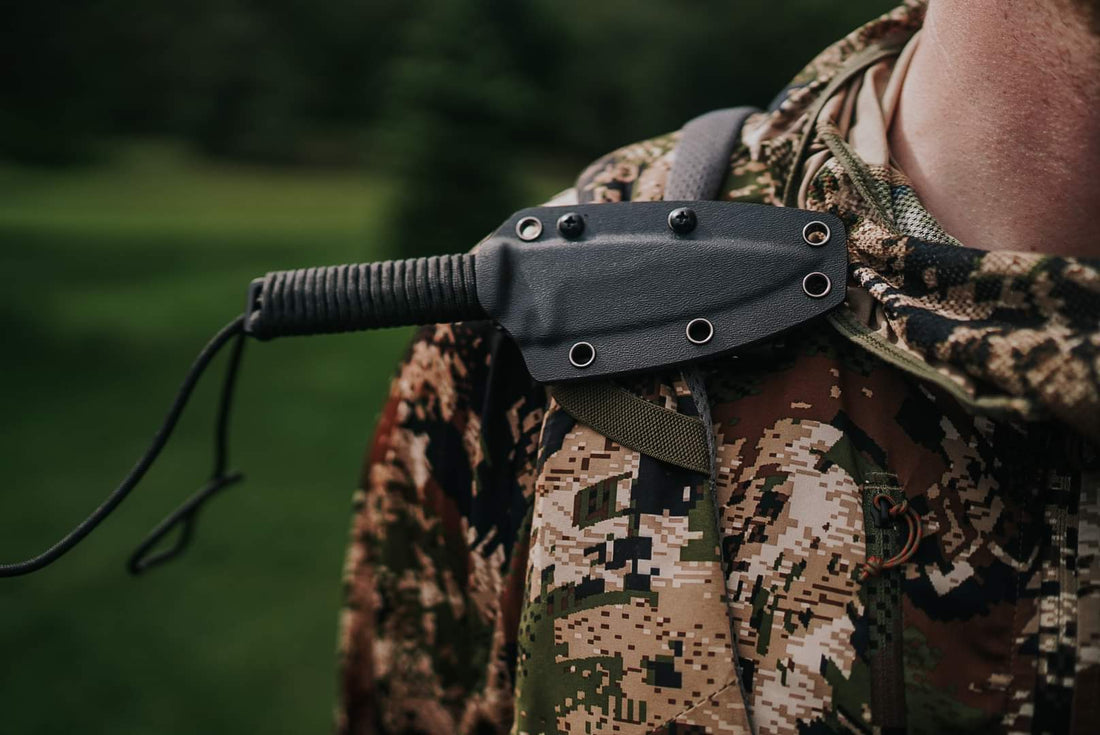If you’re a knife owner and you fly enough, you have likely lost a pocket knife to TSA, or at the very least have some anxiety about that situation. Losing a knife to TSA is a true worry for hunters and knife owners as a whole. As it should be: Even the most responsible of us will forget we have a pocket knife on us. Or the morning of our flight, we decide to use our elk hunting pack as our carry-on, and lo-and-behold, our favorite hunting knife is stashed away inside when we get to the security line.
An episode of The Meateater podcast last year discussed the interesting collection of knives and other banned items on display at the Ketchikan, AK airport. But TSA isn’t the only worry: If you do remember to pack your knife in your checked bag, will it make it to your destination? What about culinary knives like chef’s knives: Are they the same? And what’s the best way to pack them? What about if you’re not flying: Are there any concerns for traveling with knives in other situations? Let’s take a look at what TSA says about flying with knives and go over suggestions for best practices for other modes of traveling with knives.
Note: All regulations and rules mentioned are as of June 2024. These rules can change quickly, so always check with the governing authorities.
Flying With Knives
The Transportation Security Administration (TSA) has clear and concise regulations regarding knives in carry-on and checked baggage. Here’s the bottom line:
- Knives are strictly prohibited in carry-on luggage. This applies to all blades, including pocket knives, switchblades, utility knives, box cutters, and even those fancy multi-tools with built-in blades. No exceptions.
- Knives can be packed in checked baggage, but only if they are securely wrapped. TSA recommends sheathing fixed-blade knives and securely wrapping folding knives to prevent injury to baggage handlers and inspectors. You can find more information on the TSA website, including a helpful "What Can I Bring?" tool.
Here are some additional tips for flying with knives in checked baggage:
- Declare sharp objects: While not mandatory, it’s a good idea to declare sharp objects like knives to TSA when you check your bag. This can help avoid any confusion or delays during the screening process.
- Consider a hard case: For valuable knives, a sturdy case provides extra protection against bumps and jostles during travel.
- Double-check local laws: While TSA regulations allow knives in checked baggage, remember to check the laws of your destination country. Some countries may have stricter knife restrictions.
Other Modes of Public Transportation With Knives
Traveling by car, train, or bus within the U.S. has fewer restrictions on knives compared to flying. However, individual states and municipalities may have their own laws regarding knife possession in public places. Here’s what to keep in mind:
- Always check local laws: Before traveling, take a moment to research knife laws in the areas you'll be visiting. This includes restrictions on blade length, carry location (open carry vs. concealed carry), and specific types of knives that might be prohibited.
- Use common sense: Even if legal, carrying a large hunting knife openly in a crowded train station might not be the best idea. Be mindful of your surroundings and use your judgment when deciding to bring a knife and how to carry it.
Here are the regulations for some common public transport methods in the US:
- Amtrak: Unfortunately, Amtrak is a bit unclear about its rules. Knives are not allowed in carry-on bags, but while they say knives are not allowed in checked bags, they do say sheathed items are allowed in checked bags, though they don’t name knives specifically.
- Greyhound Buses: Greyhound doesn’t have a specific policy on its site detailing whether knives are allowed on the bus, but the consensus from online forums is small pocket knives are generally allowed in your carry-on bag, and longer, sheathed knives are allowed in your checked bags. As with anything, you probably shouldn’t rely on the internet and should ask Greyhound before you go.
Whether your next trip takes you to Florida for tarpon, or Nebraska for muleys, I hope these tips will keep your knives safe on this trip and many more. As with anything, a little knowledge and a little preparation is always the best way to go.












